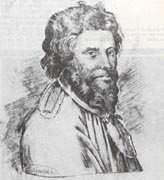
Recommended Cd's
The cultivation of the motet seems to have come to Spain relatively late. Not until Aragon and Castile were united in 1474 under Ferdinand and Isabella is there evidence of an important musical establishment where motets would have been composed and sung regularly. The Spanish presence in the Low Countries under the Habsburgs made possible a continuing Netherlandish influence on Spanish composers through most of the 16th century. Equally important for Spanish composers of that period was their association with Franco-Flemish musicians at the papal court, Morales (1500-1553), a seminal figure for the Spanish tradition, spent a decade there from 1535. The musical style that was to have the most decided effect on Morales is revealed in his choice of motets as mass models. He carries the traditions of Franco-Flemish polyphony. His compositional techniques included paraphrases, cantus firmus, and arrangements of French and Spanish songs. He was decidedly not a follower of Josquin in that he preferred dense polyphonic structures and often subordinated the meaning of the text to the structure of the composition. Morales's motets, which do show considerable more drama then the rest of his opus, are the exception. Here, he achieves a rhetorical clarity in the presentation of the text that is not matched by any of his Spanish peers.